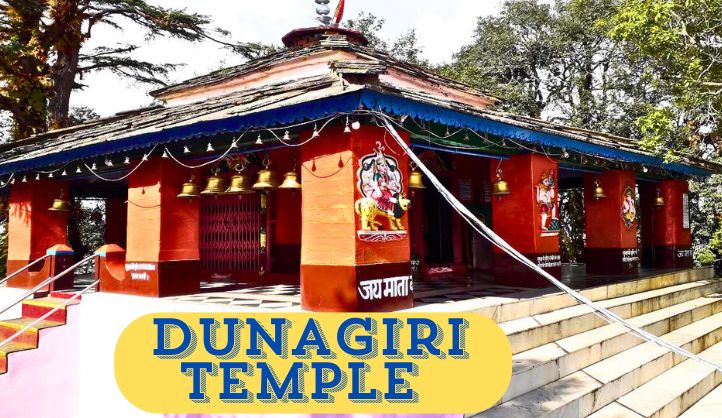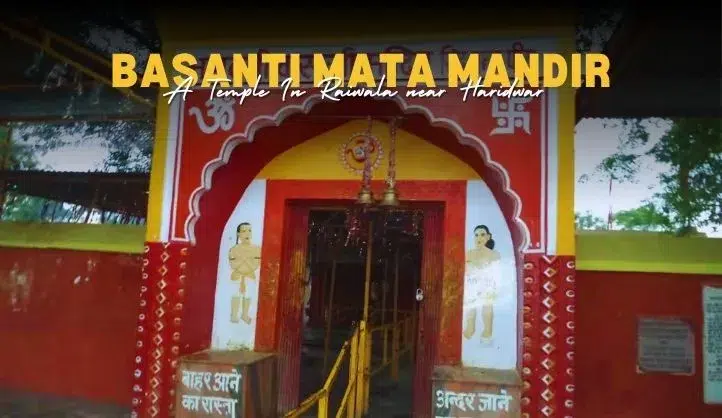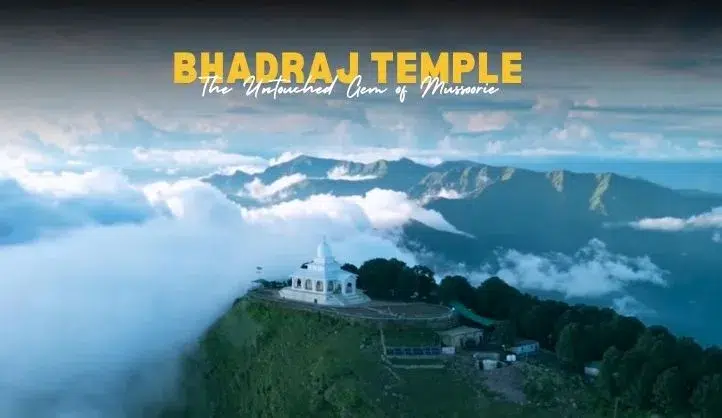Nestled in the serene hills of Uttarakhand, India, the Dunagiri Temple stands as a beacon of spiritual heritage and ancient history. This temple, dedicated to Goddess Durga, is not only a place of worship but also a testament to the region’s rich cultural past. Known for its tranquil ambiance and the picturesque beauty that surrounds it, Dunagiri Temple attracts pilgrims and tourists alike, offering a unique blend of devotion and nature.
Historical Background
Dunagiri Temple, also known as Doonagiri or Dunagiri Devi Temple, has its roots deeply embedded in Hindu mythology and ancient scriptures. It is believed that the temple was established by the Pandavas during their exile, making it an integral part of the Mahabharata’s epic narrative. Another legend suggests that the temple’s name, Dunagiri, is derived from “Drona Giri,” named after the sage Dronacharya.
One of the most fascinating aspects of Dunagiri Temple is its association with the story of Hanuman and the Sanjeevani herb. According to the Ramayana, when Lakshmana was grievously injured during the battle of Lanka, Hanuman was sent to fetch the Sanjeevani herb from the Himalayas. Unable to identify the specific herb, Hanuman lifted the entire mountain, parts of which fell at different places, including Dunagiri.
How to Reach
By Air – The nearest airport is Pantnagar Airport, about 150 kilometers away.
By Train – The nearest railway station is Kathgodam, approximately 130 kilometers from the temple.
By Road – The temple is well-connected by road. One can hire a taxi or take a bus from major towns in Uttarakhand. The final stretch involves a trek of about 2 kilometers from the nearest road head.
Map of Dunagiri Temple
Architectural Marvel
Perched at an elevation of around 8,000 feet, the temple’s architecture reflects the traditional Kumaoni style. It is constructed with stone and wood, blending harmoniously with its natural surroundings. The temple complex includes various shrines dedicated to different deities, with the main sanctum housing the idol of Dunagiri Devi.
The intricate wood carvings and stone sculptures that adorn the temple are a testament to the exquisite craftsmanship of the bygone era. The temple also features a beautiful courtyard and a series of steps leading up to the main shrine, offering panoramic views of the surrounding Himalayan ranges.
Spiritual Significance
Dunagiri Temple is considered one of the Shakti Peethas, revered sites where parts of the goddess Sati’s body are believed to have fallen. This imbues the temple with immense spiritual significance, attracting devotees seeking blessings and spiritual solace. The temple is especially crowded during Navratri, a festival dedicated to the worship of Goddess Durga when it becomes a hub of vibrant cultural and religious activities.
Visitors often report a sense of tranquility and spiritual rejuvenation upon visiting the temple. The pristine environment, combined with the resonant chanting of prayers and the scent of incense, creates an atmosphere of profound peace.
Natural Splendor
The journey to Dunagiri Temple is as enchanting as the destination itself. The temple is located near Dwarahat in the Almora district, and the trek to the temple offers breathtaking views of lush green valleys, dense forests, and snow-capped peaks. This makes the temple a favored spot not only for spiritual seekers but also for nature enthusiasts and trekkers.
Things to do in Dunagiri Temple
Seek Blessings at Dunagiri Temple
The primary activity is, of course, to visit the temple, offer prayers, and seek blessings from Dunagiri Devi. Spend time absorbing the serene and spiritual ambiance of the temple and participate in any ongoing rituals or ceremonies.
Enjoy the Scenic Trek
The trek to Dunagiri Temple is an experience in itself. The trail offers breathtaking views of the surrounding valleys, dense forests, and distant Himalayan peaks. This hike is perfect for nature lovers and adventure enthusiasts.
Visit Ranikhet
A short drive from Dunagiri, Ranikhet is a beautiful hill station known for its lush green meadows, orchards, and colonial-era buildings. Visit the Chaubatia Garden, Jhula Devi Temple, and the Kumaon Regimental Centre Museum.
Explore Jageshwar Temples
Located about 80 kilometers from Dunagiri, Jageshwar is home to a cluster of ancient temples dedicated to Lord Shiva. This archaeological site offers a deep dive into the region’s religious and architectural history.
Attend Local Festivals
If your visit coincides with local festivals, especially Navratri, immerse yourself in the festive atmosphere. Participate in the traditional rituals, enjoy local music and dance performances, and savor festive delicacies.
Preservation and Accessibility
Despite its remote location, Dunagiri Temple is well-preserved and maintained. Efforts by local communities and authorities ensure that the temple remains accessible and welcoming to visitors. The best time to visit is during the summer months, from April to June, and post-monsoon, from September to November, when the weather is pleasant, and the natural beauty is at its peak.
Nearby place to explore
Dwarahat
A charming town known for its ancient temples and serene environment, Dwarahat is an important stop for those interested in history and spirituality. The town boasts a group of 55 ancient temples dating back to the 11th and 12th centuries, showcasing remarkable architecture and intricate carvings.
Ranikhet
Ranikhet, meaning “Queen’s Meadow,” is a picturesque hill station known for its lush green meadows, orchards, and colonial-era buildings. Key attractions include:
- Chaubatia Gardens: Famous for its fruit orchards and stunning views of the Himalayas.
- Jhula Devi Temple: Dedicated to Goddess Durga, known for its cluster of hanging bells.
- Kumaon Regimental Centre Museum: Showcases the history and achievements of the Kumaon Regiment of the Indian Army.
Jageshwar
Jageshwar is home to a cluster of ancient temples dedicated to Lord Shiva. The temple complex consists of over 100 stone temples, some of which date back to the 9th century. The temples are set in a serene environment amidst deodar trees, making it a peaceful and spiritually uplifting place.
Almora
Almora is a cultural and historical hub with a variety of attractions:
- Kasar Devi Temple: Kasar Devi Temple is famous for its spiritual significance and panoramic views.
- Nanda Devi Temple: An ancient Nanda Devi Temple is dedicated to the patron goddess of the region.
- Bright End Corner: A perfect spot to witness stunning sunsets and sunrises.
- Local Markets: Known for traditional Kumaoni crafts, woolen items, and local produce.
5. Binsar Wildlife Sanctuary
Binsar Wildlife Sanctuary is a haven for nature lovers and wildlife enthusiasts. The sanctuary offers diverse flora and fauna, including leopards, barking deer, and various bird species. The Zero Point in Binsar provides a breathtaking panoramic view of the Himalayan peaks like Nanda Devi, Trishul, and Kedarnath.
6. Mukteshwar
Mukteshwar is a small hill town known for its scenic beauty and adventure activities. Key attractions include:
- Mukteshwar Temple: A Mukteshwar Temple is a 350-year-old temple dedicated to Lord Shiva.
- Chauli Ki Jali: A chauli ki jali popular rock climbing spot offering spectacular views of the valleys below.
- Mukteshwar Inspection Bungalow: Provides a magnificent view of the Himalayas.
7. Kausani
Kausani is often referred to as the “Switzerland of India” due to its picturesque landscapes and panoramic views of the Himalayas. Attractions include:
- Anasakti Ashram: A quiet place where Mahatma Gandhi stayed and wrote his commentary on the Gita-Anasakti Yoga.
- Tea Gardens: Explore the lush tea gardens and enjoy a cup of locally grown tea.
- Baijnath Temple: An ancient temple complex along the banks of the Gomti River.
Conclusion
Dunagiri Temple is more than just a religious site; it is a confluence of history, spirituality, and natural beauty. Whether you are a pilgrim seeking divine blessings, a history buff interested in ancient legends, or a traveler looking for solace in nature, Dunagiri Temple offers a fulfilling and enriching experience. As you stand at the temple’s sacred grounds, overlooking the majestic Himalayas, you cannot help but feel a deep connection to the timeless heritage and the serene beauty that defines this remarkable place.
FAQs About Dunagiri Temple
1. What is Dunagiri Temple?
Dunagiri Temple is a Hindu temple located in the Almora district of Uttarakhand, India. It is dedicated to Goddess Durga and is renowned for its spiritual significance, historical legends, and stunning natural surroundings.
2. Where is Dunagiri Temple situated?
The temple is situated near the town of Dwarahat, approximately 14 kilometers away, in the Almora district of Uttarakhand, at an elevation of around 8,000 feet in the Kumaon region of the Himalayas.
3. Is there any entry fee for visiting Dunagiri Temple?
No, there is no entry fee for visiting Dunagiri Temple.
4. What are the temple timings?
The temple is generally open from early morning (around 6:00 AM) to evening (around 8:00 PM). However, timings may vary during festivals and special occasions.
5. Is photography allowed inside the temple?
Photography may be restricted in certain areas of the temple. It is best to check with the temple authorities or signs posted at the site for specific guidelines regarding photography.









